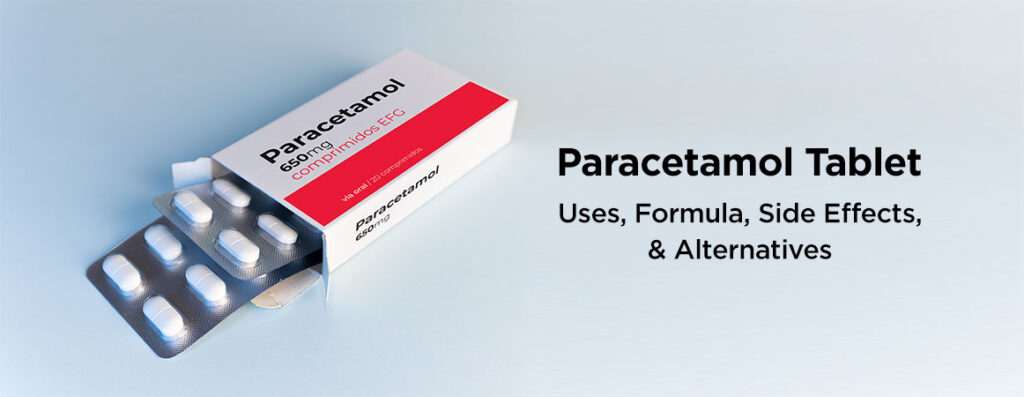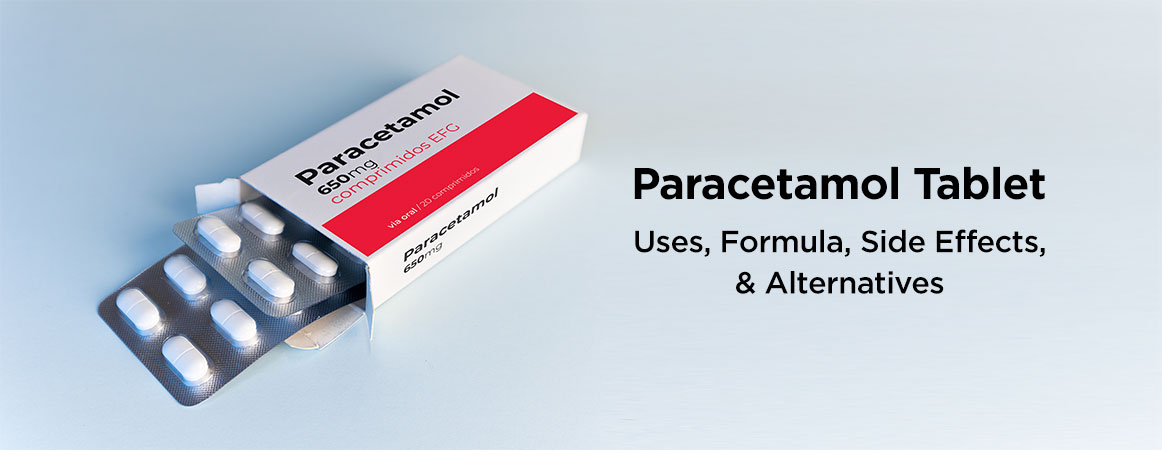What is Acetaminophen?

Acetaminophen (chemical name: N-(4-hydroxyphenyl)acetamide) is a non-opioid analgesic and antipyretic drug.
It is the active ingredient in many over-the-counter (OTC) and prescription medications used for pain and fever.
- Drug class: Analgesic and antipyretic
- Synonyms: Paracetamol (International), Tylenol (USA)
- Chemical formula: C₈H₉NO₂
- Mechanism of Action: It works mainly in the central nervous system by inhibiting the cyclooxygenase (COX) enzyme, reducing prostaglandin synthesis—thus lowering pain and body temperature.
External Reference:
NIH – Acetaminophen Drug Information
Therapeutic Uses of Acetaminophen
Acetaminophen is highly versatile and recommended for a variety of mild to moderate pain conditions.
Common Therapeutic Uses
- Fever reduction (antipyretic effect)
- Headache and migraine relief
- Toothache or dental pain
- Menstrual cramps (dysmenorrhea)
- Back pain, muscle pain, or joint pain
- Osteoarthritis (symptomatic relief)
- Cold and flu symptoms (in combination medications)
Unlike NSAIDs such as ibuprofen or aspirin, Acetaminophen does not irritate the stomach and has no anti-inflammatory effect.
WHO Model List of Essential Medicines – Paracetamol
Dosage of Acetaminophen
Dosage varies depending on age, formulation, and clinical condition.
Below is a standard guideline:
| Patient Type | Recommended Dosage | Maximum Daily Dose |
|---|---|---|
| Adults | 500 mg – 1000 mg every 4–6 hours as needed | 4000 mg/day |
| Children (6–12 yrs) | 250 mg – 500 mg every 4–6 hours | 60 mg/kg/day |
| Infants | 10–15 mg/kg per dose every 4–6 hours | Not exceeding 5 doses/24 hr |
| Elderly | Same as adults, monitor liver function | ≤ 3000 mg/day recommended |
Warning:
Overdose of acetaminophen can cause severe liver damage or acute liver failure. Always follow medical advice and dosing instructions.
FDA Guidance – Acetaminophen Safety
Composition and Forms
Acetaminophen is available in several forms to suit different patient needs:
| Form | Composition Example | Common Dose |
|---|---|---|
| Tablets / Caplets | Acetaminophen 500 mg | 500–1000 mg |
| Syrup / Suspension | 120 mg / 5 mL | For children |
| Suppository | 125 mg, 250 mg, 500 mg | Rectal use |
| Effervescent Tablets | 500 mg | Dissolved in water |
| Injection (IV) | 1 g/100 mL | Hospital setting |
Drug Combinations of Acetaminophen
Acetaminophen is frequently combined with other active ingredients for enhanced therapeutic action.
| Combination | Purpose / Indication |
|---|---|
| Acetaminophen + Caffeine | Headache and migraine relief |
| Acetaminophen + Ibuprofen | Stronger pain and fever control |
| Acetaminophen + Codeine / Tramadol | Moderate-to-severe pain management |
| Acetaminophen + Diphenhydramine | Cold, flu, and nighttime formulations |
| Acetaminophen + Pseudoephedrine + Chlorpheniramine | Sinus and allergy relief |
| Acetaminophen + Dextromethorphan + Phenylephrine | Cough and cold formulations |
Popular Brand Names of Acetaminophen
| Brand Name | Manufacturer / Region | Form |
|---|---|---|
| Tylenol | Johnson & Johnson (USA) | Tablets, Syrup, Drops |
| Panadol | GlaxoSmithKline (Global) | Tablets, Suspension |
| Crocin | GSK India | Tablets, Syrup |
| Calpol | GSK | Pediatric Suspension |
| Dolo 650 | Micro Labs (India) | 650 mg Tablet |
| Tempra | Bristol Myers | Syrup / Tablet |
| Pacimol | Ipca Labs | Tablet / Suspension |
| Metacin | Glaxo | Tablet |
| Acetadote | Cumberland Pharmaceuticals | IV Injection (hospital use) |
View All Paracetamol Brands on Drugs.com
Side Effects and Precautions
Although generally safe, acetaminophen may cause side effects in rare cases.
Common Side Effects
- Nausea
- Rash or mild allergic reaction
- Liver enzyme elevation (with high doses)
Severe (Rare) Effects
- Hepatotoxicity (liver damage)
- Allergic reactions (rash, swelling)
- Kidney impairment (with chronic overuse)
Avoid combining with alcohol or other hepatotoxic drugs (like isoniazid).
Pharmacological Classification
| Property | Details |
|---|---|
| Drug Class | Analgesic, Antipyretic |
| ATC Code | N02BE01 |
| Half-Life | 2–3 hours |
| Metabolism | Liver (CYP450 enzymes) |
| Excretion | Urine |
| Toxic Dose | >150 mg/kg body weight |
Interesting Facts About Acetaminophen
- It’s been in use since 1955, when Tylenol was first introduced in the U.S.
- It’s one of the safest painkillers for patients with gastric ulcers.
- Used worldwide in over 600 combination drugs.
- The antidote for overdose is N-acetylcysteine (NAC).
- It’s metabolically safe during pregnancy when taken as prescribed.
How long does it take for Acetaminophen to work?
Acetaminophen (Paracetamol) usually begins to work within 15 to 30 minutes after taking it by mouth.
Its maximum effect occurs in about 1 to 2 hours.
Can Acetaminophen cause constipation
No, Acetaminophen (Paracetamol) usually does not cause constipation.
